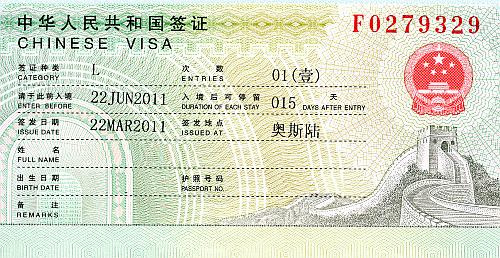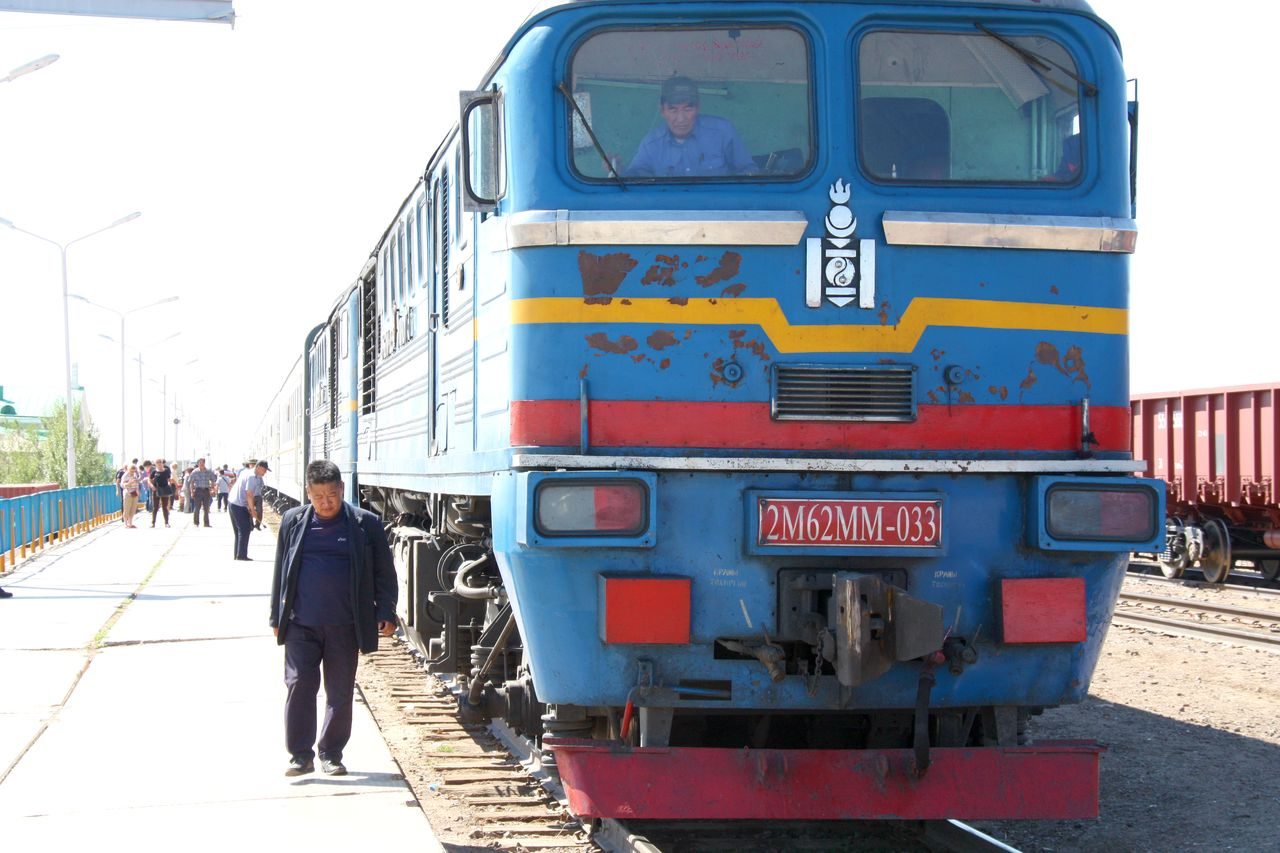A train from Mongolia to the Chinese border took us from Ulaanbaatar across the Gobi desert and a prolonged wait on the border for a change of wheels.
This is article no. 8/11 in a series from a journey in 2011 on the Trans-Siberian Railway through Russia, Mongolia and China. The text is a transcript of my diary at the time.
In Mongolia we arrived in the capital of Ulaanbaatar on the train from Russia. We went straight to the Gorkhi Terelj National Park for two nights and then back to Ulaanbaatar for one night. We then boarded a train to Beijing, China. This is the third of three articles from Mongolia.
Thursday, 2.6, Ulaanbaatar and rail travel to China’s borders
Getting on board
We got up early with breakfast at six, then off to the railway station and train No. 24, the train that would take us to Beijing. From what we saw on the platform there were substantially more foreigners on this train than on the train from Moscow to Ulaanbaatar. A number of people we met on the train from Moscow, we found here, including the taxi driver from London, a young English couple, a young Swedish couple, and so on. We had encountered many of them at excursions in Mongolia, suggesting that the program for most travellers to Mongolia is roughly the same: one or two nights in a ger, and one or two nights in Ulaanbaatar.
It was all nice and we said goodbye to our guide. I got her business card so I can send an email when I get home.
I came in a compartment with a Polish couple in the mid-fifties. They could hardly a word of English, and brought with them a couple of dictionaries, English-Polish. They had taken the train straight from Warsaw and would take a round trip by train in China before returning home from Hong Kong.
Furthermore, there was a young Dutchman at 20 years of age. Think of it, travelling alone on the Trans-Siberian twenty years old, younger than I was crossing the globe for the first time, and only four years older than my oldest son. His father was 48 years, younger than me. I got almost the father feeling for him, for he was so intelligent and sociable. He picked up the dictionary from the Poles and created a good atmosphere in the compartment with it. I talked on the trip almost as much with him as with my friends. They had the next compartment down the corridor, and the others in the party further on. No one had made any special orders on this final part of the journey. It was only to last 30 hours anyway…
Across the Gobi
The train ride went through the kind of grassy landscapes that are around Ulaanbaatar and into a broader landscape that became increasingly dry. Gradually it turned into scenery where hardly any grass would grow. It was almost desert, and it was because we were on the edge of what I believe is the second largest desert in the world, the Gobi desert. (Check at home shows that it is the fifth largest.) It extends into China and large parts of Mongolia.
It was flat and desolate, a ger here and a ger there. It’s amazing what people can live on, for there were actually some cities we passed. While the railway towns back home in more or less desolate parts of Norway have something they can live on, in addition to being home to a public administration, it is incomprehensible how they can manage to fill up these dry towns along the railway track with people. But I guess it is due to the mineral mining operations we saw examples of along the track. Mongolia is also reportedly rich in oil; they have at least some reserves. The guide said they were keen to get the same development with the sharing of benefits as in Norway, and not fall into the same impasse as Nigeria.
Two videos
Mongolian landscape to the tunes of beautiful Mongolian music. Filmed from the train on the Trans-Siberian (-Mongolian) Railway.
Video of the Gobi desert in Mongolia accompanied by Mongolian throat song. Filmed from the train on the Trans-Siberian (-Mongolian) Railway.
Life on the train
What give life on the train meaning, in addition to the travelling companions and what you see outside the window, is visits to the restaurant carriage. The restaurant belongs, as previously mentioned, to the country the train passes through. So from Sergei & Co. on the train from Moscow, we found now acquaintances in the Mongolian restaurant carriage. They had no name, which we got familiar with in any case, but we found that we could choose the same strategy as at the end of the train journey from Moscow, namely the fixed menu.
We got pretty good food with several courses. The restaurant carriage had lots of wooden carvings on the walls, tables and seats. It was a little up in standard from the Russian restaurant. We ate lunch which was the largest meal, and dinner in the evening.
A border crossing
After endless stretches of desert, we came to the border crossing. It was a drawn-out affair. Not so much the Mongolian, as the Chinese. It’s pretty amazing, or at least something to question, that at airports they scan the passport in seconds while here they spend hours on the same procedure. The Mongolians were not even interested in the forms of customs declarations, we had filled out, and they just sent us on after a half hour on the Mongolian side. On schedule.
The Chinese were very thorough; I even had to stand straight in front of a young idiot of an officer, who compared my face with my passport photo. He claimed he didn’t recognise me. He even told me to smile because I have a smile on the passport photo. Smiling on command makes me angry. I tried not to show feelings, but when he started to make me smile again when he handed back my passport three hours later, I thought it was silly. I could not help but asking him what he meant.

My visa to China
We came through. What is so special about the border crossing here is that China has a different width on their rail tracks. They are replacing the bogie, or wheelbase. We rolled into a huge hangar and some heavy lifting devices were connected. The carriages were separated from each other, the bogies rolled away and the new ones rolled in. It was an operation that took a while, about three hours. A new restaurant carriage was also added, and we could continue into China. When it passed midnight, I had my first steps on Chinese soil and could shortly after go to bed.
Stations in Mongolia
Here is the list of stations in Mongolia on the journey to the southeast.
| Station | Arrival | Stay |
|---|---|---|
| Ulaanbaatar | 2011-06-02 07:15 | |
| Choyr | 2011-06-02 11:33 | 20 min. |
| Sain-Shand | 2011-06-02 15:06 | 37 min. |
| Zamiin-Uud | 2011-06-02 19:10 | 85 min. |
| Border crossing |
All chapters in this series
- This introduction
- Some very interesting and pleasant days in Moscow. That city has certainly more to offer than we imagined.
- An excursion to a wonderful city in the Golden Ring and an evening in Moscow.
- A cruise on the Moskva River, the Gorky Park, the Kremlin and the departure for Siberia.
- The days on the train, four and a half days continuously on the move
- Mongolia: Well! Not bad to come to this country, some of the remotest imaginable of all inland countries. We first went into a national park.
- A day in Ulaanbaatar, the capital of Mongolia
- The train journey continues from Ulaanbaatar to China
- NEXT: The train into Beijing from the border to Mongolia
- First day in Beijing and a visit to the Great Wall
- The last days in Beijing and the return journey


